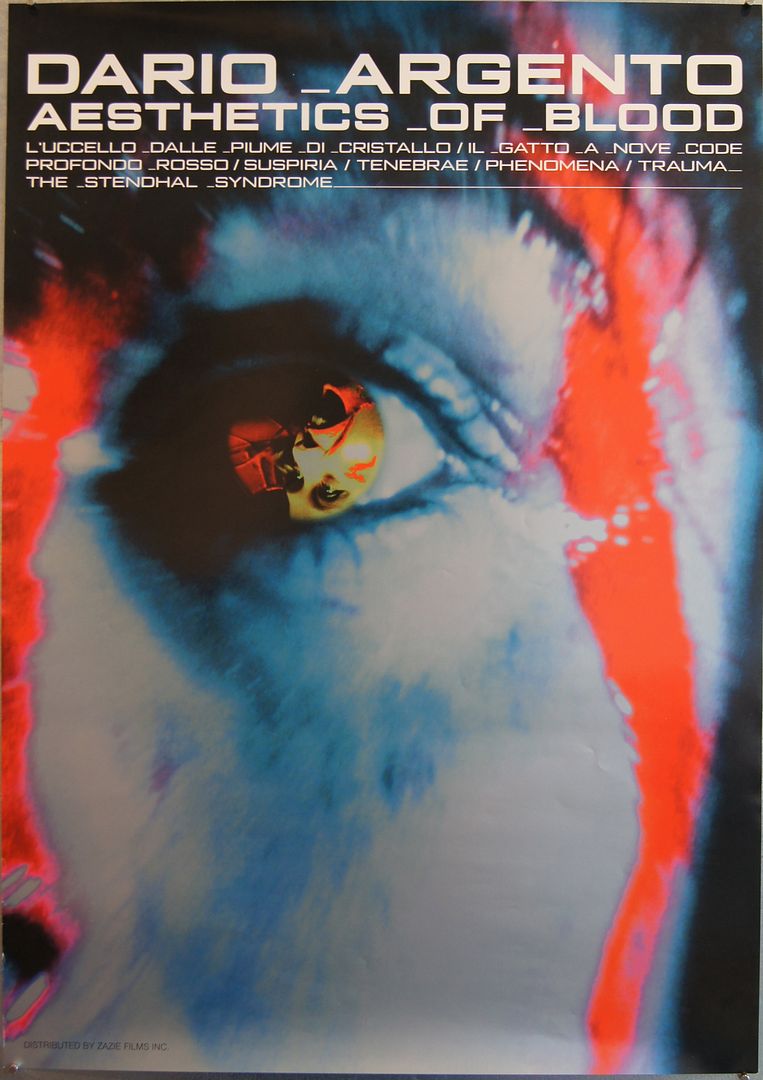*************************
From '12 Classic Italian Horror Movies You Need To See Before You Die' by Clare Simpson:
Hardly anything in the world gives me as much pleasure as Italian horror movies. They just make me really happy. Even the really crappy ones like Manhattan Baby (directed by Lucio Fulci) or – heaven forbid – anything directed by Bruno Mattei. Yes, I will sit down to that man’s films. I love cannibals, I love zombies, i positively adore all sorts of Italian horror based mayhem. I am also a huge fan of Giallo movies, and as some of you may have read, I wrote an article rating the best Giallo movies a while back.
The line dividing Giallo and straight out horror often becomes blurred in Italian cinema. Take a film like Torso (The Bodies Bear Traces of Carnal Violence). On one level it is a typical Giallo concerning a murder-mystery – a who dunnit with a masked killer running around – one of the most obvious motifs in the Giallo genre. On another level, it can be read as a typical straight slasher horror film – which is how it was marketed to overseas audiences.
In this list, I have mainly tried to focus on pure Italian horror, however some Giallo elements inevitably sneak in. There is a lot of pilfering and copying in Italian horror cinema, so I have attempted to pick the most original movies possible as well as the classics we all know and love. So please enjoy 12 Classic Italian Horror Movies – and if you have your own favourites please list them below.
**************************************************
If you can remember watching television before the cable-age, then you probably saw some of these movies and maybe didn't even realize that they were Italian or European. Someone compiled a list of the 50 top Italian horror directors, which gives a good quick overview of this sub-genre.
.
Hardly
anything in the world gives me as much pleasure as Italian horror
movies. They just make me really happy. Even the really crappy ones like
Manhattan Baby (directed by Lucio Fulci) or – heaven forbid – anything
directed by Bruno Mattei. Yes, I will sit down to that man’s films. I
love cannibals, I love zombies, i positively adore all sorts of Italian
horror based mayhem. I am also a huge fan of Giallo movies, and as some
of you may have read, I wrote an article rating the best Giallo movies a
while back.
The line dividing Giallo and straight out horror often becomes blurred in Italian cinema. Take a film like Torso (The Bodies Bear Traces of Carnal Violence). On one level it is a typical Giallo concerning a murder-mystery – a who dunnit with a masked killer running around – one of the most obvious motifs in the Giallo genre. On another level, it can be read as a typical straight slasher horror film – which is how it was marketed to overseas audiences.
In this list, I have mainly tried to focus on pure Italian horror, however some Giallo elements inevitably sneak in. There is a lot of pilfering and copying in Italian horror cinema, so I have attempted to pick the most original movies possible as well as the classics we all know and love. So please enjoy 12 Classic Italian Horror Movies – and if you have your own favourites please list them below.
Read more at http://whatculture.com/film/12-classic-italian-horror-movies-you-need-to-see-before-you-die.php#t7ZFKkbzaIOWlBm3.99
The line dividing Giallo and straight out horror often becomes blurred in Italian cinema. Take a film like Torso (The Bodies Bear Traces of Carnal Violence). On one level it is a typical Giallo concerning a murder-mystery – a who dunnit with a masked killer running around – one of the most obvious motifs in the Giallo genre. On another level, it can be read as a typical straight slasher horror film – which is how it was marketed to overseas audiences.
In this list, I have mainly tried to focus on pure Italian horror, however some Giallo elements inevitably sneak in. There is a lot of pilfering and copying in Italian horror cinema, so I have attempted to pick the most original movies possible as well as the classics we all know and love. So please enjoy 12 Classic Italian Horror Movies – and if you have your own favourites please list them below.
Read more at http://whatculture.com/film/12-classic-italian-horror-movies-you-need-to-see-before-you-die.php#t7ZFKkbzaIOWlBm3.99


